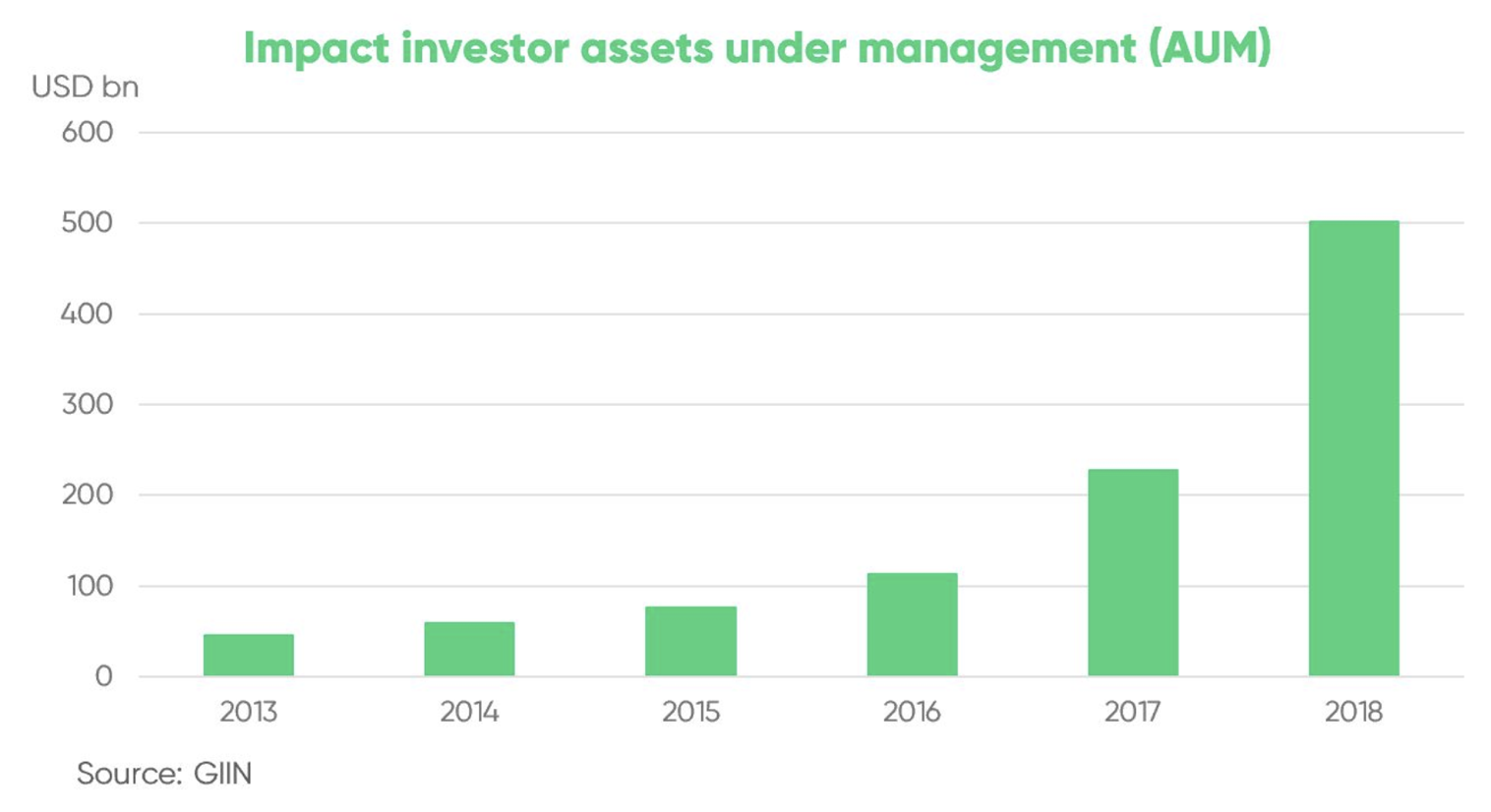
Supply and demand for growth capital in socially responsible companies has grown.
Specialized infrastructure, networks and expertise are necessary for impact investing.
Impact measurement will improve with more impact investing.
The world has reached a critical juncture in the relationship between industry and society. We are no longer in a period where, as Milton Friedman said, "the only social responsibility of business" is to continually increase its profits. Today, we live in a new era of "and", in which businesses must work to address social challenges and simultaneously generate growth in order to achieve success.
Over the past many years, awareness of this shift in priorities has increased and evolved. Stakeholder groups like the Business Roundtable and the World Economic Forum’s International Business Council have helped drive that conversation, emphasizing the obligations of companies to create positive social and environmental impact.
In this context, both the supply of capital available – $502 billion in impact investing AUM worldwide – and the demand for growth capital has expanded, creating a two-sided marketplace where entrepreneurs and investors can meet in the middle.
Since TPG's inception, we have been at the forefront of social, consumer and demographic change. Five years ago – alongside Bono, Jeff Skoll, and a Founders Board with deep collective experience in social purpose – we created The Rise Funds, which sit at this nexus of supply and demand. Since then, we have funded more than 25 impact businesses across sectors. We have learned a lot along the way.

Here, we offer practical insights based on our experience doing this work to help the overall community enhance effectiveness and accelerate impact.
1. Impact investing can scale
Impact investing is no longer just venture investing. There are significant opportunities for scale, including both growth market investments and sizable companies. We have deployed more than $1.7 billion in capital and we’ve raised more than $4 billion dollars across our platform.
Scale can create impact and growth-driven “flywheels” that spur additional impact beyond the original thesis of the investment. For example, Rise has quietly become one of the world’s largest education investors – investing across career learning tools, education technology, and quality private education for underserved students. Each investment in these industry sub-sectors has informed future investments and provided valuable insights that help our portfolio companies enhance growth, reduce costs and increase impact.
2. Impact investments need not be concessionary
There is a misconception that impact investing must generate lower financial returns than traditional investment strategies. That’s not what we’ve found. Our ability to meaningfully contribute to portfolio company revenue growth while accelerating these companies’ impact are testament to the fact that it is possible to do both. Within the Rise portfolio, for example, combined company revenue across our portfolio grew 30% during the last four years. Ultimately, there is space in this market for growth companies, growth investors and market rate returns.
3. Mission driven companies want mission driven capital
In the impact world, not all capital is created equal. Entrepreneurs are seeking investment partners whose missions are aligned with theirs. When we reach out to investors to fundraise for Rise, frequently the first question we get is around our assessment tools and how we evaluate investments for ongoing impact. Similarly, many companies in our portfolio work with us because they want a partner with the same mission, who is focused on their growth and impact goals.
Value alignment creates a strong and enduring partnership over time, such as our longstanding relationship with companies like Dreambox. As Dreambox CEO Jessie Woolley-Wilson put it when we partnered with her, her company gained a partner “whose mission of social impact is perfectly aligned with ours”.
4. Impact investing takes an ecosystem
Effective impact investing requires more than just capital and a team. In fact, in some ways it is more difficult to be an impact investor; you must excel in both quality investing while also fostering positive impact. Investing in an era of "and" requires excellence in underwriting andexcellence in mission.
Specialized infrastructure, networks and expertise are necessary. Surround yourself with leaders who understand the space. Partner with LPs who have a genuine interest in impact. Build advisory networks that enhance and enrich your experience set and are oriented around your mission.
5. Measurement and practice will mature together
There are countless efforts ongoing to measure impact, but impact measurement is challenging and complex. As the tools evolve, we should not let perfect be the enemy of the good. Our experience has taught us that we will learn along the way: more impact investing allows us to measure better; more measurement allows us to improve our investing practices.
We are better today than we were five years ago, when we started. And we see continual improvement. Our goal is to drive more impactful decisions through practice and experience, leveraging the wealth of knowledge available about what works to make the world better. We continue to share what we have learned through the creation of Y Analytics so we can refine and advance together. As the industry matures, measurement will be informed by practice and vice versa. Measurement perfection should not be a barrier to action; we will get better over time.
Conclusion
We are seeing impact investing grow from a niche market to the leading edge, and this shift is on a long-term trajectory. Every investor and every company will be tested on impact. Admittedly impact investing is hard. Investors face a second test that adds complexity. It will get easier as money gets smarter, ecosystems become more specialized and global demand for impact solutions continue to grow.
We all must work together to both increase the size of the market dedicated to positive impact, while seeking to ensure these organizations ultimately deliver on the promise of mission-driven and economic sustainability.